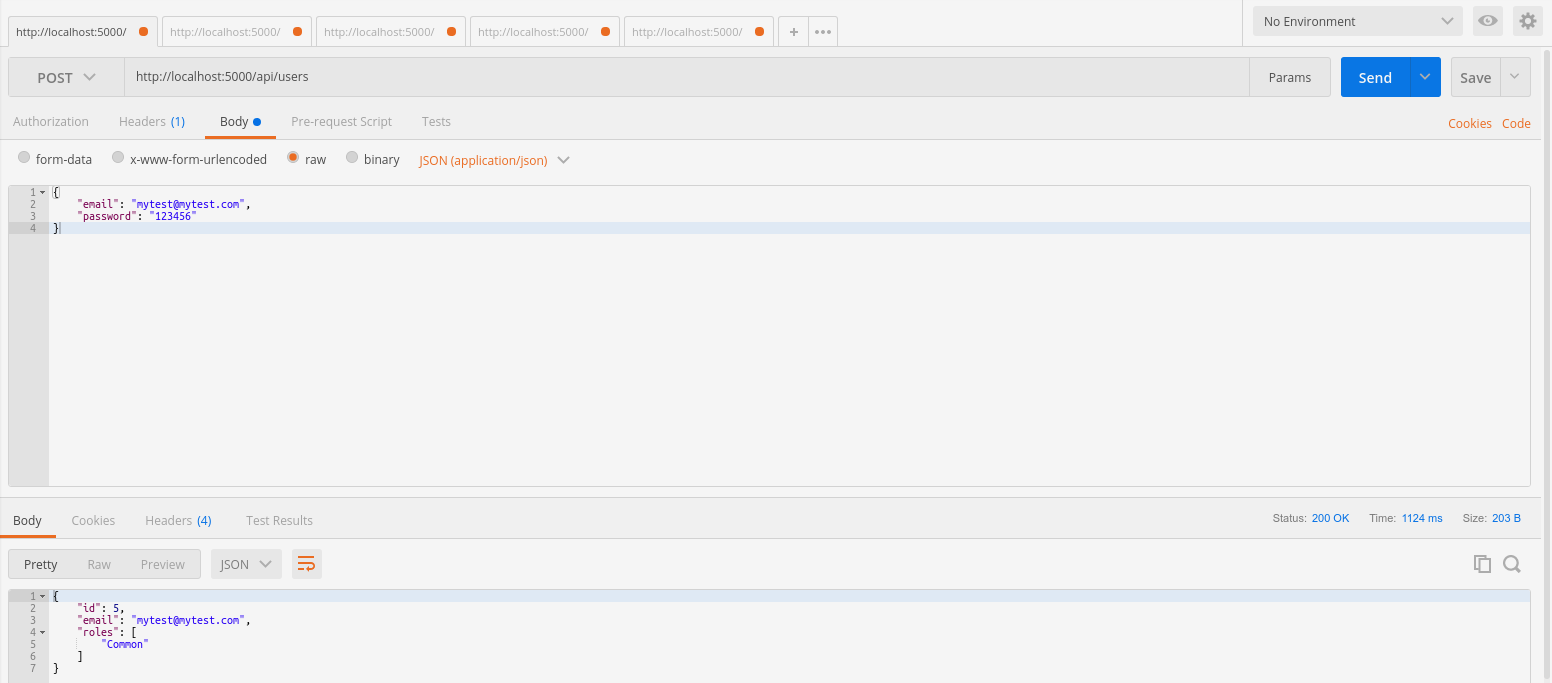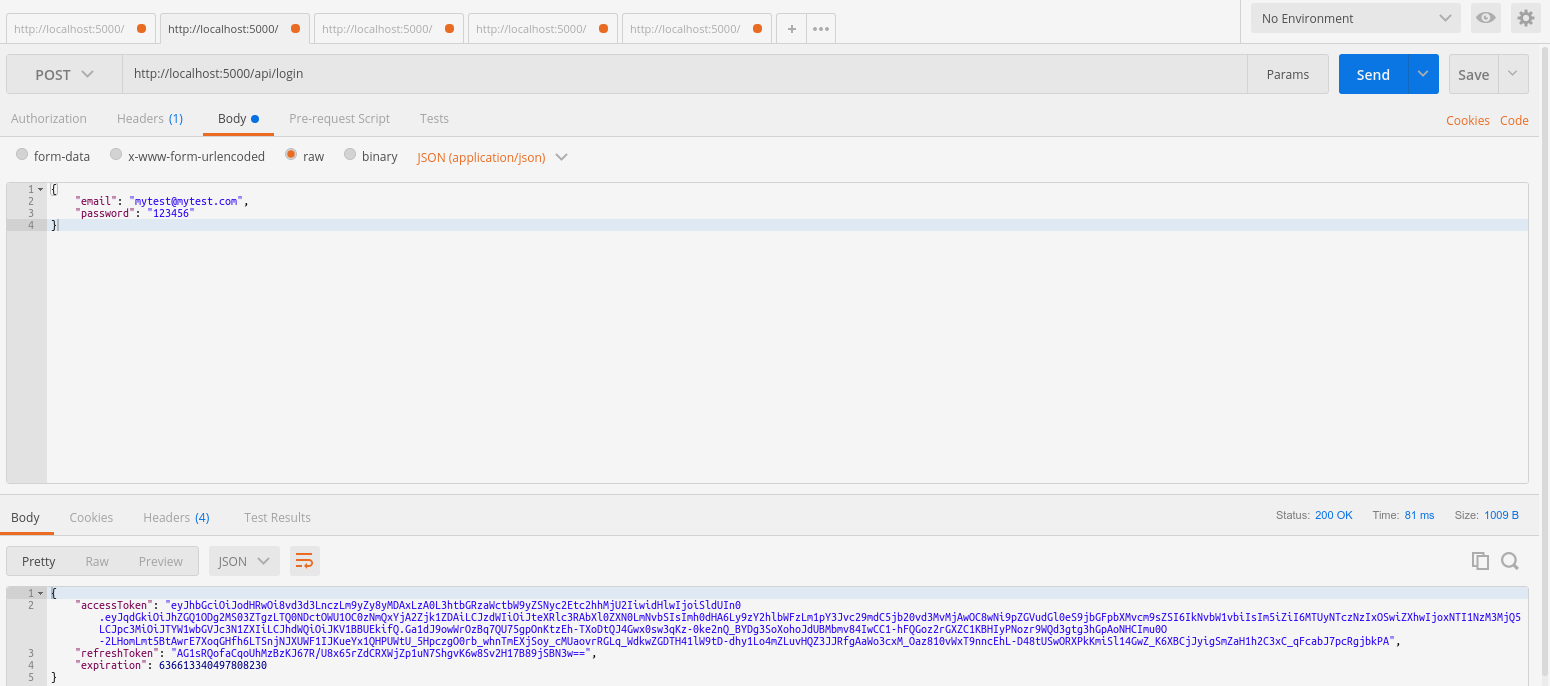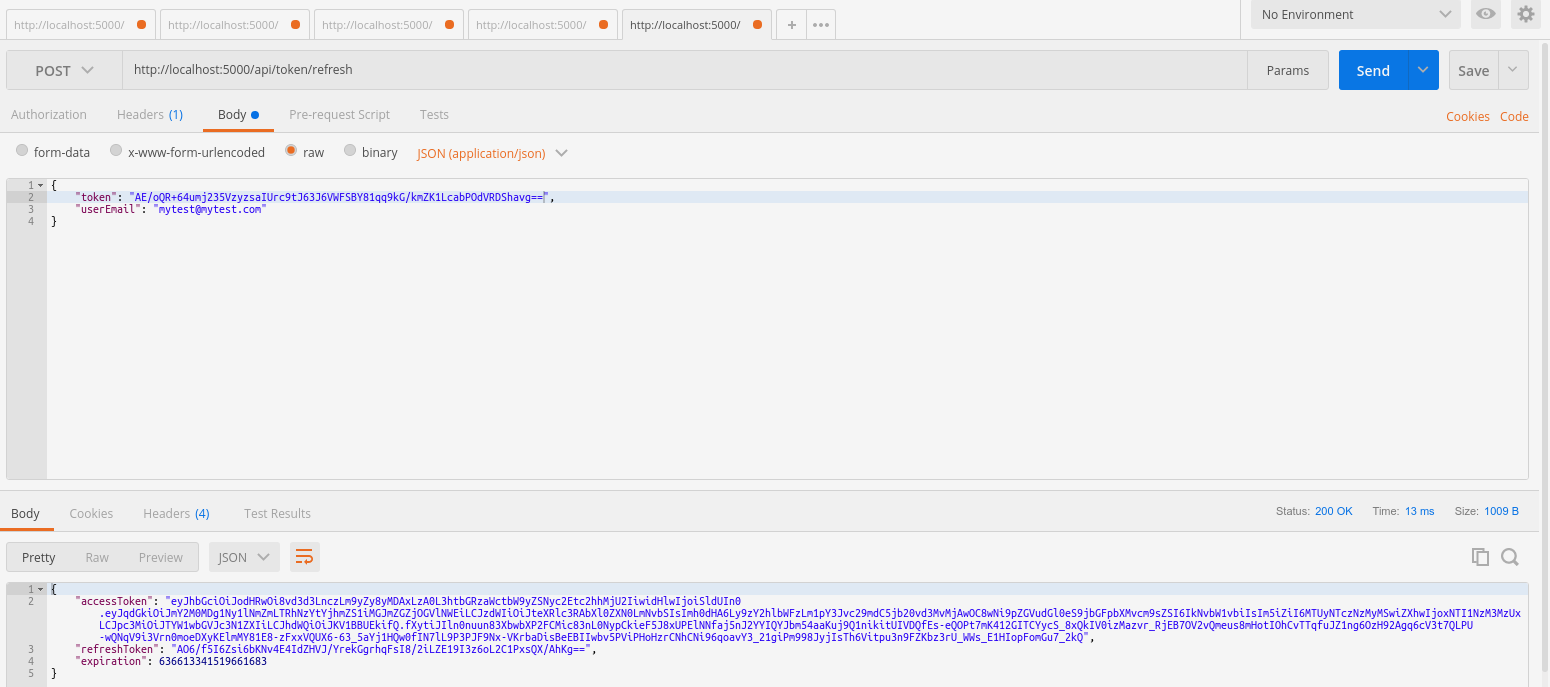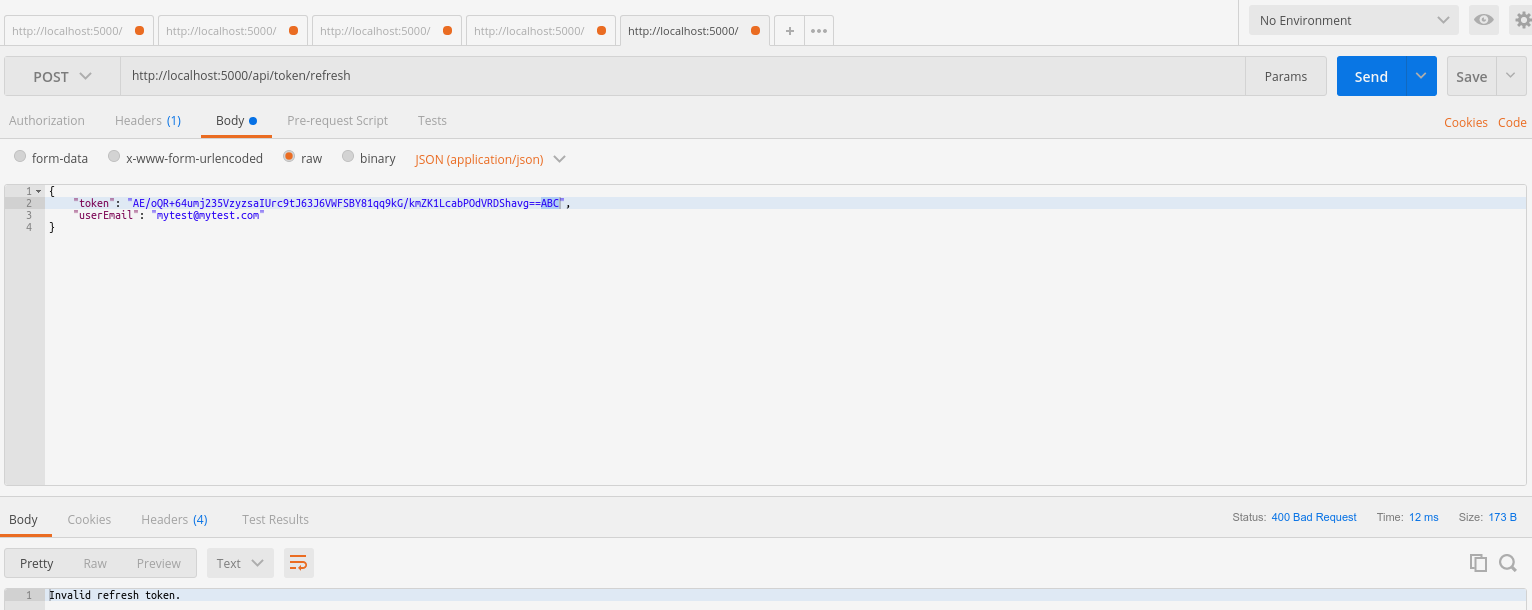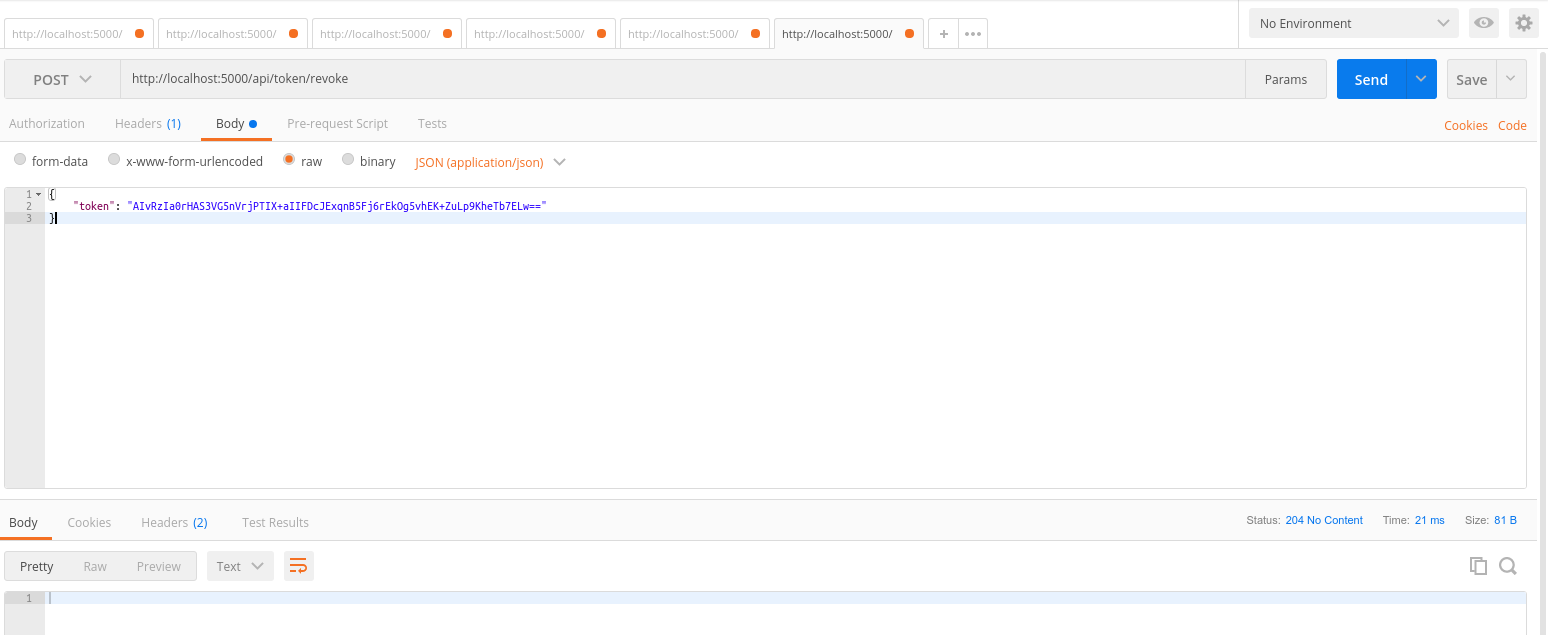Example API that shows how to implement JSON Web Token authentication and authorization with ASP.NET Core 3.1, this is an upgrade of the original project evgomes/jwt-api.
- User registration;
- Password hashing;
- Role-based authorization;
- Login via access token creation;
- Refresh tokens, to create new access tokens when access tokens expire;
- Rovoking refresh tokens.
The API uses the following libraries and frameworks to deliver the functionalaties described above:
- Entity Framewok Core (for data access)
- AutoMapper (for mapping between domain entities and resource classes)
- Swashbuckle.AspNetCore Version 5.0.0-rc4 (for API document generation and to provide a "poor man's UI" for manual testing)
You will need a way to test the API endpoints. I recommend you to use Postman.
First of all, clone this repository and open it in terminal. Then restore all dependencies and run the project. Since it is configured to use Entity Framework InMemory provider, the project will run without any problems.
$ git clone https://github.com/evgomes/jwt-api.git
$ cd jwt-api/src
$ dotnet restore
$ dotnet runTo create a user, make a post request to http://localhost:5000/api/users specifying a valid e-mail and password. The result will be a new user with common users permission.
{
"email": "mytest@mytest.com",
"password": "123456"
}
There is already two predefined users configured to test the application, one with common users permission and another with admin permissions.
{
"email": "common@common.com",
"password": "12345678"
}
{
"email": "admin@admin.com",
"password": "12345678"
}
To request access tokens, make a post request to http://localhost:5000/api/login sending a JSON object with user credentials. The response will be a JSON object with:
- An access token which can be used to access protected API endpoints;
- A request token, necessary to get a new access token when an access token expires;
- A long value that represents the expiration date of the token.
Access tokens expire after 30 seconds, and refresh tokens after 60 seconds (you can change it in appseting.json).
There are two API endpoints that you can test:
http://localhost:5000/api/protectedforcommonusers: users of all roles can access this endpoint if a valid access token is specified;http://localhost:5000/api/protectedforadministrators: only admin users can access this endpoint.
With a valid access token in hands, make a GET request to one of the endpoints showed above adding the following header to your request:
Authorization: Bearer your_valid_access_token_here
If you get a token as a common user (a user that has the Common role) and make a request to the endpoint for all users, you will get a response as follows:
But if you try to pass this token to the endpoint that requires admin permission, you will get a 403 - forbidden response:
If you sign in as an admin and make a GET request to the admin endpoint, you will receive the following content as response:
If you pass an invalid token to any of the endpoints (a expired one or a token that was changed by hand, for example), you will get a 401 unauthorized response.
Imagine you have a single page application or a mobile app and you do not want that users have to log in again every time an access token expires. To deal with it, you can get a new token with a valid refresh token. This way, you can keep users logged in without explicitly asking them to sign in again.
To refresh a token, make a POST request to http://localhost:5000/api/token/refresh passing a valid refresh token and the user's e-mail in the body of the request.
{
"token": "your_valid_refresh_token",
"userEmail": "user@email.com"
}
You will receive a new token if the specified refresh token and e-mail are valid:
If the request token is invalid, you will receive a 400 response:
Now imagine you want the user to sign out, or you want to revoke a refresh token by any reason. You can revoke a refresh token making a POST request to http://localhost:5000/api/token/revoke, passing a valid refresh token into the body of the request.
{
"token": "valid_refresh_token"
}
You will get a 204 No Content response after calling this endpoint.
This example was created with the intent of helping people who have doubts on how to implement authentication and authorization in APIs to consume these features in different client applications. JSON Web Tokens are easy to implement and secure.
If you have doubts about implementation deatils or if you find a bug, please, open an issue. If you have ideas on how to improve the API or if you want to add a new functionality or fix a bug, please, send a pull request.
